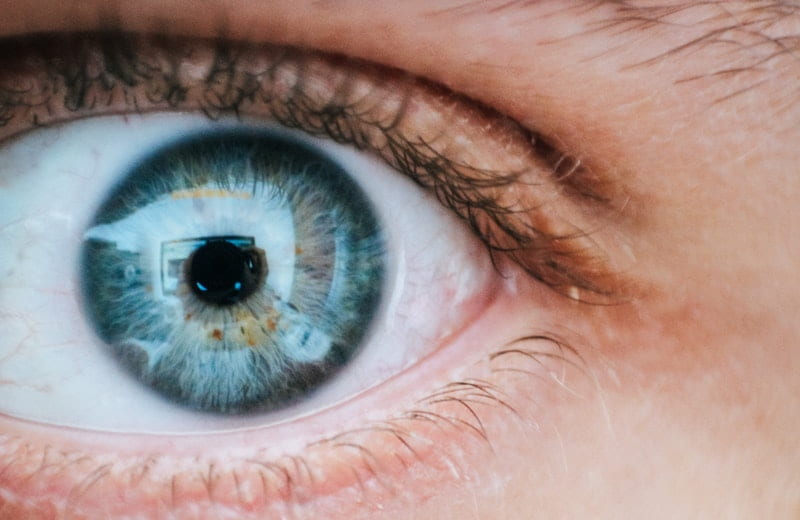Pink eye, also known as conjunctivitis, is a condition that causes inflammation to the outermost layer of the white part of the eye. The inflammation also spreads to the innermost area of the eyelid. Hence, the eye appears reddish and may be itchy, painful, and one may also experience a burning sensation. Other symptoms include blurred vision, yellow, green, and white discharge, increased sensitivity to light, and a heightened number of tears. The itching is mostly because of an allergic reaction. This condition can affect one or both eyes.
The most common causes of pink eye are viral. Viruses are then followed by bacterial infections. This virus infection may be because of frequent colds. Both the viral and bacterial causes can spread from one person to another quite fast. The most common allergic reasons of pink eye are pollen and animal hair allergies.

1. Viral Infections
In most cases, viral pink eye is associated with infections in the upper respiratory tract, sore throats, and common cold. Adenoviruses are the most common cause of viral infections. They are also the most common causes of pink eye. Wearing contact lenses and glasses that have not been appropriately cleaned or those that belong to someone who has some viral infection may cause viral pink eye.
This ailment shows a delicate diffused pinkness in the conjunctiva. It is also easily mistaken for a culinary disease of the iris. However, you can distinguish it because of its collaborative microscopy, specifically on the lymphoid follicles and the tarsal conjunctiva. Occasionally, there is a punctuate keratitis. Most viral infections do not have a treatment procedure. The infections will often clear out on their own.
2. Bacterial Infections
Bacterial infections cause a rapid onset of conjunctiva redness, mucopurulent discharge, and swelling of the eyelids. The symptoms develop in one eye and then spread to the other in 2-5 days. These pus-producing bacteria cause irritations and a stringy, yellow-green discharge that causes the eyelids to stick together when a person sleeps. There may also be noticeable crusting of the infected eye and the skin that surrounds it.
The itchiness is occasionally localized, causing people to think that they have foreign objects in their eyes. Acute bacterial infections can be extremely painful. Some bacteria such as chlamydia trachomatis often produce conjunctivitis symptoms without redness. The virus will clear out in a week or two, although antibiotics lessen the duration of infections.
3. Eye Exposure to Wind
Regardless of the information available online, it is critical to note that, although pink eye is contagious, it is not airborne. However, eye exposure to wind causes the eye to dry out. Dryness causes an increase in the pain and inflammation that is experienced during pink eye infections. In many cases, when one has the flu, they tend to blow their noses frequently. In windy situations, the body fluids move faster and may get to the eye, which begins the infection. The drying effects of the eye’s exposure to the wind make it easier for the virus or bacteria to work and allow it to spread faster.
4. Eye Exposure to Sun
Like the wind, the sun also creates the perfect conditions for the infection to spread through the eye. Once the bacteria or virus has been implanted in the eye, the eye exposure to sun creates dry and warm conditions where the virus can operate. This makes it easier for it to spread faster. Sunburns to the eye are also significant causes of pink eye. They are characterized by redness and pain.
5. Chemical Conjunctivitis
Chemical conjunctivitis is because of an alkali or acidic substance getting to the eye. For the eye, alkali burns are worse than acidic burns. Some will cause mild conjunctivitis while others will be so severe that the cornea will become white. To rule out chemicals, doctors may want to use a litmus paper to verify the PH of the eye. Local anesthetic eye drops are a great way of decreasing the pain due to these chemicals. The infections are mainly characterized by redness, and this symptom may be localized to the lower conjunctival sac if the chemical splashed into the eyes.
6. Allergies
Most allergens, including dust, pollen, and animal hair cause allergic conjunctivitis. They may flare up occasionally or all year round. However, they usually get better once the cause of the allergy has been treated or the allergen has been removed. Antihistamines can give relief as you try to find out what may be causing the reaction. They are usually accompanied by light sensitivity, a running nose, and red eyes. They also frequently affect both eyes. These are not contagious.
7. Blocked Tear Duct
A blocked tear duct makes it difficult for your tears to drain usually. This leaves the eye watery and irritated. This is a common condition in newborns. In adults, the situation may lead to pink eye or tumor. However, in newborns, it clears out without any treatment. This is a correctable condition, and the treatment used depends on the age of an individual and the level of blockage.